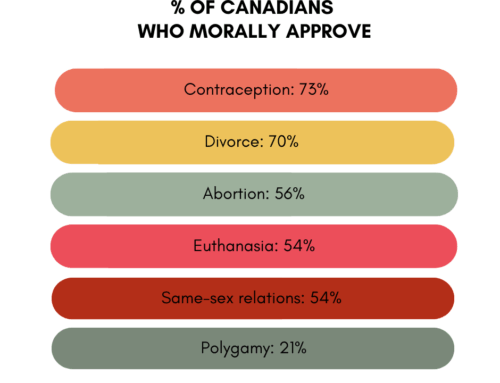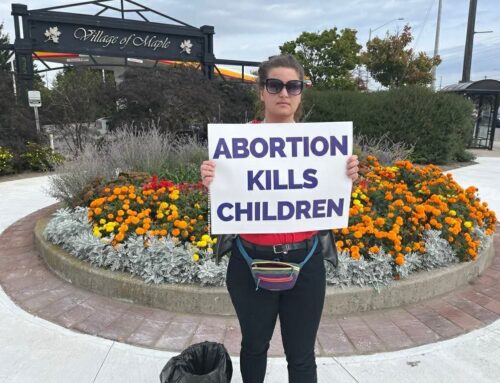In a landmark decision on April 21, the Supreme Court of the Netherlands held that a Dutch physician was not guilty of murder in the planned and deliberate killing of a demented patient in a nursing home despite not having even attempted to obtain the consent of the patient to be euthanized.
Regardless, the Court held that the physician did nothing legally wrong because she had acted in accordance with a legally binding, advance request for euthanasia which the patient had signed while still mentally competent. But regardless of the legal merits, does this ruling make moral sense?
Surely not. And to see why not, consider the background to the case as set out in the agreed upon set of facts documented in the court record.
The patient was diagnosed with Alzheimer’s in 2012 and shortly thereafter, signed an advance request for euthanasia. On January 22, 2015, she updated that request with a clause stating: “I want to exercise the legal right to have myself euthanized when I think the time is right. I definitely do not want to be placed in an institution for elderly people with dementia.”
During the balance of 2015, the mental condition of the patient rapidly deteriorated. She became ever more confused and ever more difficult for her husband to care for at home. During a consultation on Jan. 28, 2016, her family physician warned the patient in the presence of her husband that she would soon have to be confined to the dementia ward of a hospital.
Later, in sworn testimony, the physician recalled: “I then asked about euthanasia. She did not know what that was, euthanasia. I explained it to her and at that moment she said ‘No I don’t want that.’ I explained to her that she would be admitted to hospital and that she would have to stay there and that she had previously indicated that she did not want that and then I started talking about euthanasia. She said, ‘Yes maybe I want it, but not now.’”
At this point, the patient was no longer legally competent, but she could still clearly formulate her desire to go on living. Her family physician told the court: “You ask if I had the impression that she understood me after I explained what euthanasia meant. Yes, because I explained it to her. Judging from her reaction, I felt she understood what I meant.”
Seven weeks later, on March 3, 2016, the patient was consigned to a nursing home. On March 8, the geriatrician who later euthanized the patient interviewed her and found that she was profoundly demented, seriously delusional and suffering terribly. These facts are not in dispute.
However, it is noteworthy that even on this date, the patient was still able to express her desire to go on living. In recalling this meeting, the geriatrician testified: “I ask her if she knows she has dementia. That she seems to understand. I ask her if she still wants to go on living. Yes, indeed, she does. She does not want to be dead. She repeats this several times.”
In a second interview on March 10, 2016, the geriatrician asked the patient if she found it annoying that her memory was less good. Again according to the testimony of the geriatrician, “She answers that she has had that, but luckily, it is better now. Then I ask her if she would prefer to be dead: Yes, if I were to become sick, but not yet, okay.”
The observations of nurses in the patient’s medical file at the nursing home confirm that she was often delusional, very upset and terribly tormented. As many as 20 times a day, she would say that she wished she were dead.
By the middle of April, the geriatrician finally agreed with the patient’s husband and daughter that the patient’s life was no longer worth living — that it was time to end her suffering by putting her to death. So at 10 o’clock in the morning of April 22, 2016, the day set for the euthanasia, they all gathered in the patient’s room where they sat down together and everyone enjoyed a cup of coffee in “very cozy atmosphere.”
Note that the patient had no idea that she was about to be euthanized. At the coffee gathering, no one asked her if she wanted to die and she certainly gave no indication that she wanted to be killed. To the contrary, she happily made plans to join her family for dinner that evening.
The geriatrician contends that there was no point in trying to obtain the patient’s consent to euthanasia that day because she was so demented that she could no longer understand what was in her own best interests. For this same reason, the geriatrician felt justified in surreptitiously lacing the patient’s final cup of coffee with a powerful sedative so she could not raise any objections once the euthanasia procedure got underway.
What happened next is notorious. The patient duly fell asleep and the geriatrician initiated the euthanasia. But soon, everything went horribly wrong. The sedative did not work as planned. To the consternation of the physician and bystanders, the patient suddenly sat bolt upright, strenuously tried to remove the death-dealing catheter from her arm, and had to be forcibly restrained by her husband and daughter so the geriatrician could quickly finish killing her with a paralyzing overdose of thiopental.
While many people might deduce from this frightful episode that the patient did not want to be killed, the Dutch Supreme Court disagreed. It endorsed the opinion of an expert witness that: “The physical and verbal reactions which the patient displayed as the euthanasia was underway relate to reflex reactions that did not penetrate to the consciousness of the patient.”
Perhaps so, but what about the patient’s demeanour on Jan. 28, March 8 and March 10, 2016. She was surely conscious then when she made clear to her family physician and her geriatrician that she did not want to die.
Granted, during the last year of her life, the patient often said that she wished she were dead, but she never told any of her physicians “I want you to kill me now.” The patient never crossed that definitive line.
Furthermore, just as mentally incompetent children can make their wishes known, so could the patient. Despite having indicated in her advance request for euthanasia that she would rather be dead than reside in a nursing home, once she was actually confined to a nursing home, she changed her mind and was able to make it abundantly clear that she still wanted to live.
Among dementia patients, such alterations in mood and outlook are not unusual. In a statement on “Medical Assistance in Dying” last October, the Euthanasia Society of Canada pointed out that: “Every person will experience dementia in their own way. While symptoms and duration can vary from person to person, it is common for individuals to live with dementia for many years. A person’s wishes, values and beliefs may change over time. It can also be difficult to predict future suffering.”
Right. Yet in this same statement, the Euthanasia Society of Canada also asserted: “We respect the right of all persons with dementia to advocate for their individual best interests, including advocating for MAID (medical assistance in dying, e.g., lethal injection) through advance requests.”
Coming from the Euthanasia Society of Canada, an organization that is supposed to safeguard the lives and promote the wellbeing of dementia patients, this is a shocking suggestion. As the foregoing Dutch case illustrates, dementia patients who sign an advance request for euthanasia are liable to end up getting themselves killed when they are legally incompetent, but still able to make clear that they want to go on living.
There is only one effective way for the Euthanasia Society of Canada to safeguard vulnerable dementia patients from involuntary euthanasia: Instead of calling for the legalization of advance requests for medical assistance in dying, the Society should join in a concerted campaign to revoke the calamitous legalization of euthanasia altogether.





